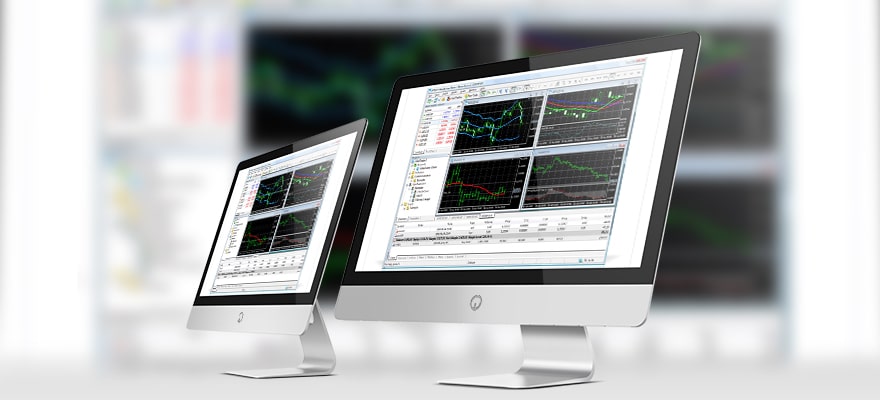Newly launched brokers often fail to fully recognize the needs and challenges awaiting in setting up dealing desks or trading operations.
The London Summit 2017 is coming, get involved!
In most cases, owners and directors of upshot firm will hire a specialist to consult on the matter. It’s ok, they think, as expert specialists should be familiar with the subject and should know all the ins and outs. However, experience shows that when it comes to setting up trading systems, they often have a very narrow view of the subject matter, and not always the right one.
In this article, I will lay out the basic options in some of the most crucial aspects of setting up dealing operations from scratch. This may provide new entrants with an idea of the questions they should be asking. As the FX industry is a rapidly changing one, and its managers are known to be averse to the required adjustments, it will assist them as well to stay abreast with updates and improve their firm’s quality and effectiveness.
Which terminal to choose?
For the client, trading begins with the terminal and the first thing you need to do is to choose one.
Overall, all trading terminals can be divided into two main categories: MetaTrader and non-MetaTrader
Overall, all trading terminals can be divided into two main categories: MetaTrader and non-MetaTrader. Simply put, without MetaTrader brokers have little chances of winning a significant clientele. So effectively the choice is between MT4, or the not-so-recently launched successor MT5.
The difference is not that big, but while MT4 is still more popular among traders, MT5 is faster and boasts better functionality. Another factor to consider I that MT4’s support is getting worse and worse and, sooner or later, will be completely discontinued. As a broker, you will have to decide what is more important: a quick start or a becoming future proof.

MetaTrader 5
Purchase vs white label solution
The next important point is the terms by which you’ll be using the platform. Given that MT is quite expensive, opting for MT4 might not be not so prudent, as it is something of a declining force. I would advise brokers to opt for the MT5 solution.
But, it is not necessary to purchase it altogether, especially not at the beginning. Believe it or not, not everyone is aware of the White Label scheme, which is cheaper albeit it has one trick: WL scheme usually means that your trading will effectively be done via another firm.
We would happy to consult on our solution, which provides broker with a WL terminal and a completely independent trading setup.
Technologies
When it comes up to the terminal’s abilities, it's time to talk directly about technologies of quoting and hedging – the core of trading. This is exactly where the miser pays twice.
There are many technology offerings in the market, and differences are significant. Saving on technology can lead to a loss of potential clients if the performance is sub-standard, or equally problematical loss of money if dealing becomes inefficient.
Saving on technology can lead to a loss of potential clients if the performance is sub-standard
To build an effective, high quality trading operation is quite a difficult task, one that not every consultant or every technology can handle – when approaching it you will need a hands-on partner with a proven track record.
Hedge or not to hedge
Are you about to hedge your clients’ trades? If you act as a market maker without hedging (aka the B-book model), you can expect a higher return on the turnover but you will be carrying very high trading risks which can result in losses and even bankruptcy. When sending your client’s trades to the market, you work with Liquidity providers. While this is a growing area and supply is abundant, providers vary in conditions and quality of production.
There are suppliers who will make the broker's clients very unhappy, and it's better not to let this happen. There are also several schemes that show you how to work with suppliers: you can derive from one supplier, you can collect a pool of liquidity in the aggregator, and you need to consider that the scheme will depend not only on the financial status of the company, but also on the jurisdiction as not all suppliers are ready to open accounts, for example, offshore.
Each scheme has both positive and negative sides, and it is very difficult for a person who is not well informed to understand this. I have related to a-book and b-book extensively in the past. (read in Russian here).
Each scheme has both positive and negative sides, and it is very difficult for a person who is not well informed to understand this
Conclusion
Your traders have a perfect understanding of how a full trading system should look like (and you don’t necessarily want to rely on those rookies who don’t, as their acquisition is expensive and their lifetime is rather short).
The experienced traders you want are savvy enough to control execution quality up to a millisecond levels, and calculate average spreads on a decimal level. And yet some brokers in the market still struggle with delivering an effective, high-quality solution in a cost-effective way.
With experience of over 10 years, and vast knowledge across the trading eco-system, we at AMTS Solutions we’ll be happy to provide more information and provide you with keys for your success. Learn more here.
















